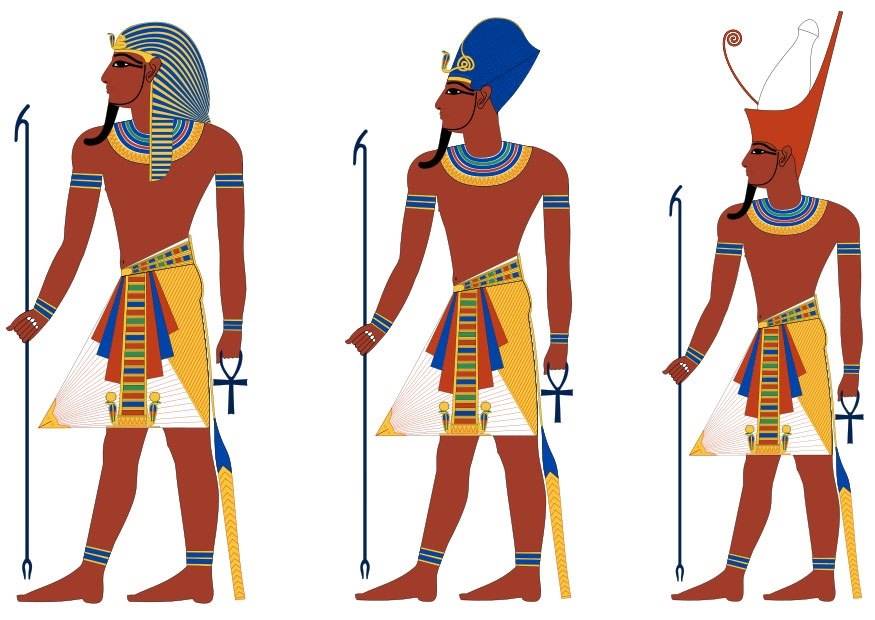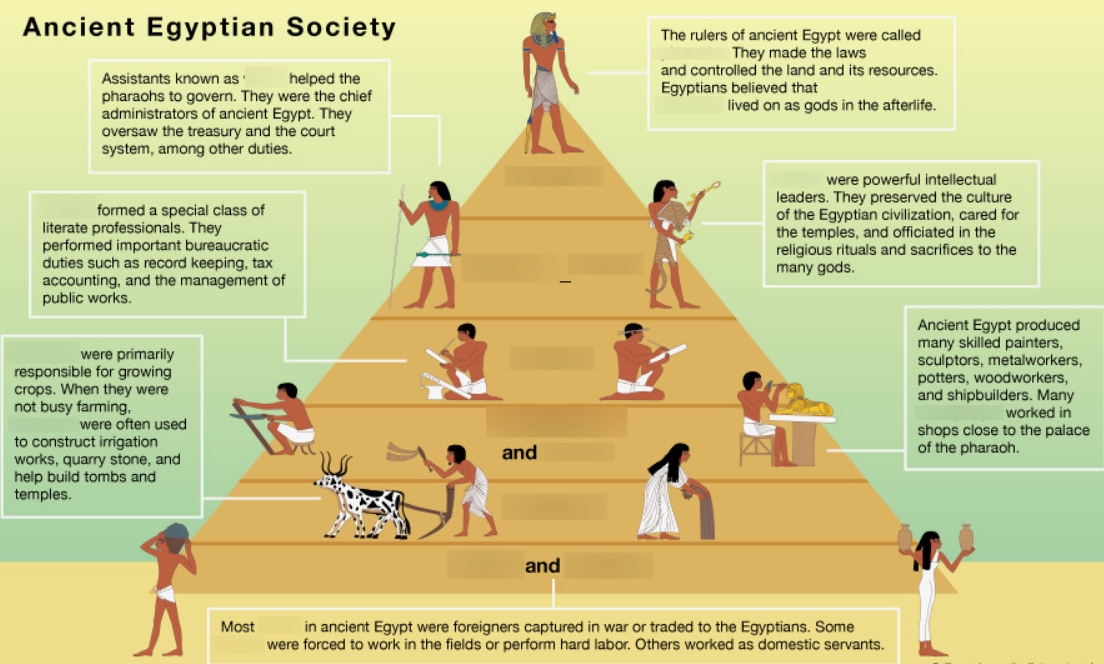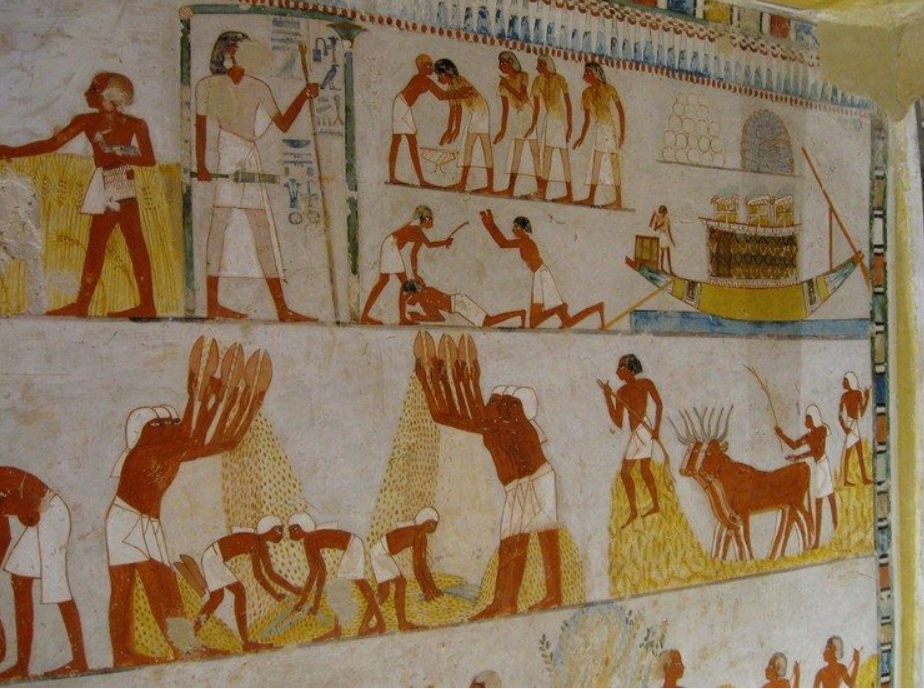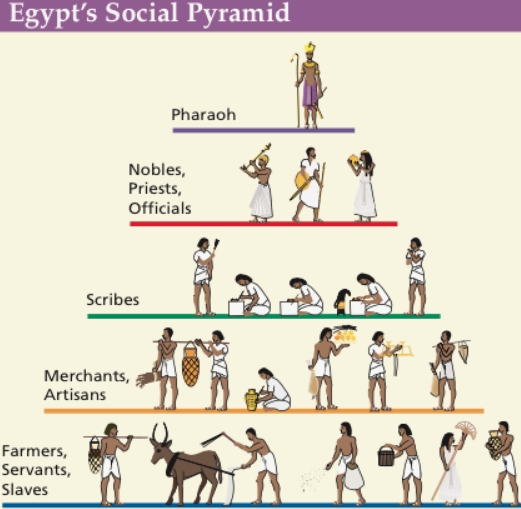Ancient Egypt Social Structure: A Comprehensive Overview
Ancient Egypt is renowned for its incredible advancements in architecture, art, and culture. However, one of the key aspects that allowed this civilization to thrive for thousands of years was its well-defined social structure. Understanding the social structure of ancient Egypt provides insight into how their society was organized and functioned on a day-to-day basis.
In this article, we’ll explore the main tiers of ancient Egypt’s social structure, from the powerful pharaoh at the top to the hardworking farmers and slaves at the bottom. This overview will help illustrate the significance of each group in maintaining the prosperity of this fascinating civilization.
1.The Pharaoh: Supreme Ruler of Ancient Egypt

At the very top of the social structure was the pharaoh, the most powerful person in ancient Egypt. The pharaoh was seen as both a political leader and a divine figure, often considered a living god. His or her role was to maintain harmony, enforce laws, lead the military, and act as the religious leader of the nation. The pharaoh had absolute power, but their ability to govern relied on a loyal team of advisors and officials.
Famous pharaohs such as King Tutankhamun and Queen Cleopatra are still well-known today, but many others, like Ramses II and Hatshepsut, played key roles in shaping Egypt’s history.
Below the pharaoh were members of the royal family, including the pharaoh’s wife (queen), children, and other close relatives. They enjoyed a privileged lifestyle and often held important positions within the government.
2.Nobles and Priests: Trusted Advisors and Religious Leaders
Directly below the pharaoh in the social structure were the nobles and priests, who held great influence in ancient Egypt. Nobles were often members of the pharaoh’s family or close allies who governed different regions of Egypt, ensuring that the king’s laws were carried out. These individuals often lived in wealth and luxury, enjoying the benefits of their high rank.
Priests were essential in maintaining the religious beliefs of ancient Egypt, which centered around a vast pantheon of gods. Temples dedicated to gods like Ra and Osiris were maintained by the priesthood. Priests also played a crucial role in rituals, ensuring the gods were honored, which was believed to keep the Nile’s floods consistent and the nation prosperous.
3.Scribes and Officials: The Backbone of Administration

In the third level of the social structure, A class of skilled individuals called scribes were vital to the smooth functioning of the state. These educated men were trained in reading, writing, and mathematics, allowing them to record important information, such as tax collections, legal documents, and trade records.
Alongside the scribes were various government officials responsible for enforcing the pharaoh’s laws, overseeing projects such as irrigation or pyramid building, and keeping the kingdom’s economy running smoothly.
4.Soldiers: Defenders of Egypt
The military was also an essential part of ancient Egyptian society. Soldiers defended Egypt’s borders from invasions, secured trade routes, and at times, expanded Egypt’s territories through conquests. In exchange for their service, soldiers were often given land and other rewards, which could elevate their status within society.
In times of peace, the military also took part in civil projects such as building temples and monuments.
5.Artisans and Craftsmen: The Creators
Artisans and craftsmen were skilled workers who created everything from jewelry to furniture to the awe-inspiring temples and tombs that still stand today. These individuals were highly respected for their abilities and their contributions to the construction of important structures, like the pyramids or the tombs in the Valley of the Kings.
Craftsmen typically specialized in areas such as metalworking, carpentry, or pottery. Their creations not only served functional purposes but were often seen as offerings to the gods, which made their work spiritually significant.
6.Farmers: The Providers of Sustenance

The majority of ancient Egypt’s population consisted of farmers, who were the backbone of the economy. They were responsible for growing crops like wheat, barley, and flax along the fertile banks of the Nile River. Since Egypt’s agricultural success depended on the annual flooding of the Nile, farmers played a crucial role in feeding the entire population.
Farmers had to give a portion of their crops as tax to the pharaoh, and in return, they were provided with protection and infrastructure that supported their agricultural activities.
7.Slaves: The Labor Force
At the bottom of the social structure were the slaves, who were often prisoners of war or people in debt. While slaves in ancient Egypt were generally not treated as harshly as in other ancient civilizations, they still had little personal freedom and were often tasked with labor-intensive jobs, such as building monuments, working in households, or toiling in the fields.
Final Thoughts:
The social structure of ancient Egypt was a well-defined hierarchy that allowed the civilization to flourish for thousands of years. From the all-powerful pharaoh down to the humble farmers and slaves, each class had an important role to play in maintaining the kingdom’s prosperity. This intricate system ensured that Egypt remained one of the most successful and enduring civilizations in human history.
By understanding the social structure of ancient Egypt, we can better appreciate the complexities of this incredible society and its long-lasting impact on the world.

